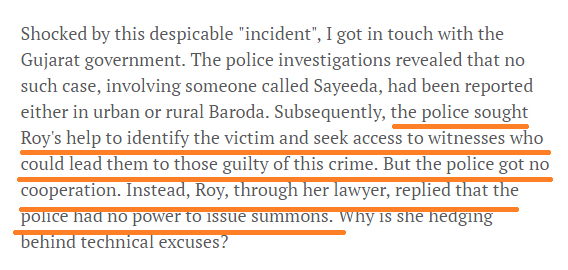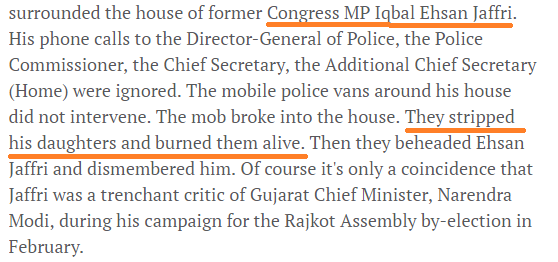It is painful to be writing this, especially in the context of our country, India. Nevertheless, it must be written.
A 5,000 year old civilization that many would argue represents the pinnacle of human potential is being relentlessly bludgeoned to its knees. A value system, societal fabric, culture, religion and multitude of peacefully coexisting yet incompatible philosophies, no doubt with many deficiencies, that had together expanded the circle of empathy, love and respect to embrace the entirety of universe – all living beings, the whole of nature – is today suffering the relentless onslaught of an ugly, contorted outlook that is, best guessed, born out of mercenary motivations.
So much so that even the voiceless, innocent animals are not being spared in a quest to ostentatiously establish liberal right to choice of food but, to covertly reinforce secularism credentials. In a country that values life in any and all forms, the larger section of the opposition has allowed the discourse to be dirtied to a nauseating extent.
In March-April 2016, a heartbreaking news had shocked many in the country. Shaktiman, a police horse, had died after having been allegedly assaulted by a BJP MLA, even though visuals showed he had not hit the horse. The country, media shed tears, while teams of doctors, caretakers, police personnel were deployed to take care of the hapless animal. A prosthetic limb was flown in from the US to help Shaktiman. Unfortunately, Shaktiman could not be saved. She died despite care, treatment and many wishes from animal lovers. People across the country were sad and indignant at the news.
Animal lovers worldwide expressed grief and indignation. Once the news was out, it is reported experts from the world over offered their assistance to help Shaktiman. The then Chief Minister Harish Rawat paid his tributes to Shaktiman after his death. Union Minister Menaka Gandhi expressed strong sentiments at the incident and asked for the expulsion of the MLA. Even the MLA, Ganesh Joshi himself said ‘I am very sad. I was not at fault…if I am found guilty, then cut my leg.’
A little more than a year later, while a debate on animal slaughter is underway, the government is introducing regulations in the industry. Recently, an inhuman, barbaric act was carried out – this time by Youth Congress workers in Kannur, in the communist ruled state of Kerala, where appeasement and anti-Hindu politics has been the norm of many decades. In a public gathering, a cow was slaughtered in broad daylight in a market in Kannur, cooked and served. She was slaughtered, cut into pieces while a group of workers barbarically sloganeered. And the incident was filmed.
Unfortunately, she does not get the same liberal, urban love and sympathy. She does not deserve a name like Shaktiman did. Unfortunately for her, she is a ‘Hindu animal’ – thus, deserving condescension of atheists, liberals and progressives alike. She could be trampled on and even animal lovers would keep quiet. For she is worse than an animal – a commodity which did not qualify for human sympathy.
The token tweets of condemnation by a few were more about politics than compassion. And, the saddest part of the entire episode was that it happened just for the sake of politics.
Paul McCartney of the Beatles fame had once said:
If slaughterhouses had glass walls, everyone would be a vegetarian.
Shockingly, for this group, it does not appear true. The extent of remorselessness demonstrated by that political crowd of Kannur is scary and unnerving. If a cold, unflinching butchering of an innocent, voiceless animal in full public view could only evoke brute political sloganeering and not a shred of remorse, or sympathy, then today, we must realise we stand directly challenged by a thought strand which represents the absolute nadir of human potential. A thought strand that subscribes to only political opportunism.
The media, on the other hand, co-conspired by their conspicuously dubious covering. One TV anchor worded his question to a BJP participant with the phrase: ‘mummy in one state, yummy in another’ referring to BJP’s approach to beef consumption in states like Goa or North East, displaying a pathetic insensitivity to the incident. Politics is all they could see. The cow was dead and gone.
And, animal lovers are deafeningly quiet.
These two incidents over the last 14 months have been meted out disturbingly dissimilar and biased treatments. The fact is that a grotesque, and even savage political opportunism is operating, pathetically masquerading as freedom loving secular-liberalism. Even if one were to forget secularism and all other isms, that fact is that any thought strand whose actions manifest as what has happened in this Kannur market is inhuman.
Much beyond being a product of modern animal rights movements, value of all life, not just human, and love, respect for animals, plants and nature is ingrained in the Indian psyche. Liberalism that finds satiation in meat dripping with fresh blood as remarked by a well known journalist is not just alien but, antithetical to Indianness. However, today, in order to further a variety of vested interests, politics has killed the value of life and a large mercenary media has helped by concealing this ‘crime’ against nature.
Should we allow the poor calf that was cut into pieces by warped appeasement politics to be unnamed? Unlike Shaktiman, she symbolises that grotesque political ideology and opportunism that knows no respect for life, culture or civilization. She is Ganga for she has brought before us all the opportunity to cleanse ourselves of a hypocritical thought stream through her life. Even though she died knowing only the basest form of human brutality, our prayers are with Ganga in her afterlife.
















